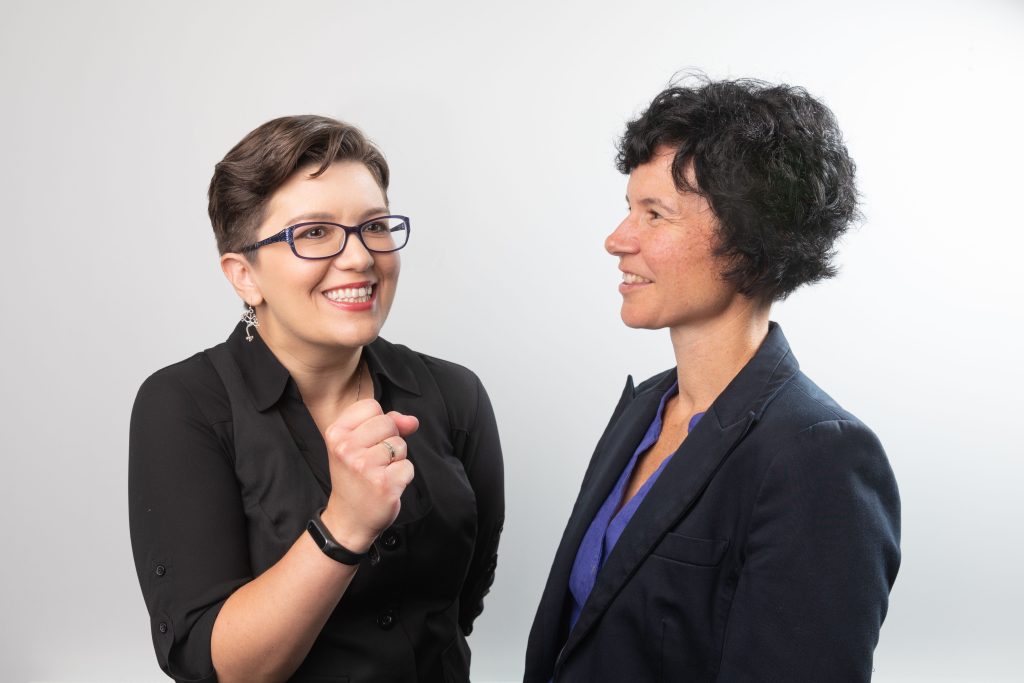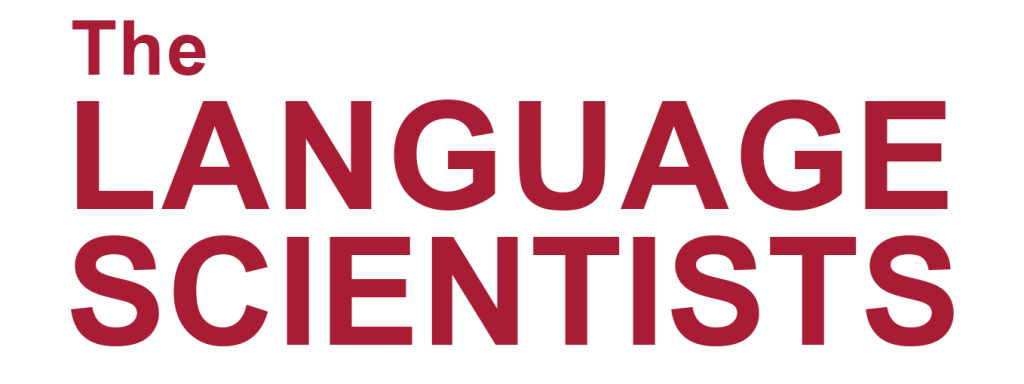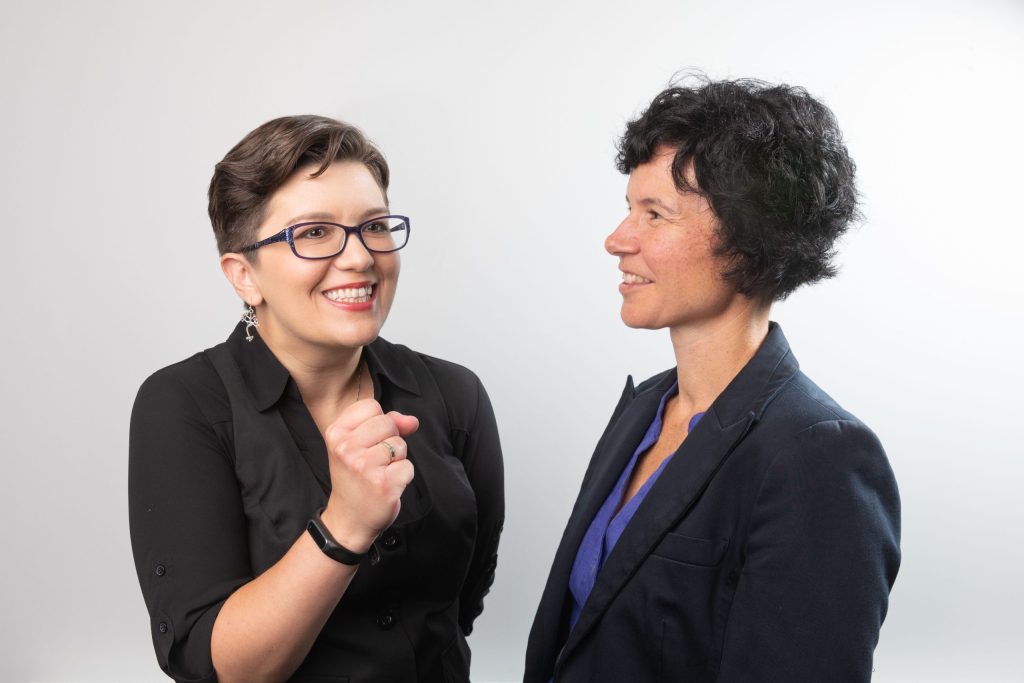So. You have now listened to some episodes of The Language Scientist Podcast (if not, go for it! We think they are pretty good!) and you might be wondering: “How do you even make a podcast?” I thought I would share our journey from Academics to Podcasters.
There are a few important steps: deciding whether to make a podcast, choosing the topics, finding the answer to the great question of funding, creating each podcast, and recovering from errors.
Why make a podcast?
Firstly, we decided that making a podcast might be an interesting way of taking our research to the general public. Not many people will read our actual research articles, and we thought this was a shame because we love our research and we want to share some of the findings with people outside of the academic world. Also, everyone has a busy life and they don’t have time to sit down to read an article. What is good about a podcast is that it is possible to listen to on the go, whilst commuting for example, and they are easily accessible.
What topics should you discuss?
We then started thinking about what kind of topics we wanted to include. Of course we wanted to include our research, but we thought it might be nice to have guests on the podcast too. So, we reached out to other researchers working on a variety of topics that were interesting to us and that we thought listeners would enjoy. We decided to focus on topics related to facilitating language learning and how to conduct rigorous language learning research. Everyone we asked agreed to be involved in the podcast.
Do we need funding?
There are different ways to answer this question. Technically anyone can record and publish a podcast. You need: a decent microphone, some software to record (e.g. audacity is free), a podcast host (we used Captivate.fm, but there are lots of others and they are relatively cheap too). Then, when you are ready you publish the podcast on the platforms of your choice (e.g. Apple Podcast, Google podcast, etc). Job done.
Of course, there is a bit more to it. You might want to add music to the intro and outro for example. You might listen to each recording carefully and decide to cut some sections (editing). This can take a while to get good at if you have no prior experience. We decided to hire a production company to do all that for us because as academics, we were really short on time. So the bottom line was that we needed money. Thankfully, the British Academy opened a Talent Development Award which we applied for and got. Hurray!
How do you make each podcast episode?
Neither of us had done this before and we did not actually know where to start. Thankfully, as part of the grant we had asked for some money for training so we attended a one-day course on Podcasting to get us started. In the course, we discussed different formats for a podcast and this is when we decided to go for the “interview style”. We thought it would be good to stick to a similar format for each podcast, so we wrote a template that we used throughout. We also use the same music, intro and outro for each podcast to give the series a sense of unity. After the intro and a bit of background on the guest, we always start by asking about their language background. This is a really nice way of getting them to talk about something easy (a warm up!) and we thought we could always remove it later. In the end, it is super interesting to hear about each person’s individual and unique journey into learning languages so we always keep it. For all of our guests, it was really nice to see the variety of experiences that led them to the careers they have today. Every guest is different!
After the language background question and a question about how they became language researchers, we always jump into the topic of the day. We tended to write down a few questions that we were going to ask our guests (and shared these with them to put them at ease) beforehand. However, during the recording, we always end up just having a chat about the topic. Whilst you are recording an episode, you don’t have time to read your notes AND actively listen to your guest. In the end, we just go with the flow of the conversation and ask whatever follow-up questions pops into our heads as would naturally happen during a conversation. To summarise this section, it is good to be prepared, but do not worry about sticking to a script; instead just go with the flow of the conversation.
At the end of the episode we always ask our guest what they want people to remember from the episode, to give them a chance to summarise their message.
What do you do when things go wrong?
We were a bit nervous before each recording session but our producer told us not to worry because after all this was not a live performance and we could always edit it. And we needed to! Sometimes it was just as easy as editing out a comment we made, or shortening a guest’s answer to a question. But at other time we have had to re-record a whole session: my interview about my research, Series 1 Episode 1 was recorded twice in a row! This made it surprisingly tricky to remember if I had already said something in the current recording or if it just felt like I was repeating myself because I had just recorded a whole podcast about it! At other times, the computer went to sleep and we were not sure whether it was still recording but carried on regardless (i.e., forgetting it was not live and we should pause instead to check!). So overall, when things go wrong the cognitive load of continuing to speak and listen AND try to figure out how to solve the technical glitch was quite demanding! It made for some behind-the-scenes giggles afterwards (e.g. me to Kaitlyn: “You were not listening to me at all there were you?” Kaitlyn: “No! I was trying to wake my computer up!”).
Our producer was listening to the whole recording sessions though so when things sounded wrong to him he simply asked us to re-ask a question and we took it from there.
The extras: what else do you need that you didn’t think of before?
One of the things we had not realised at the start was that we were going to need some cover art. I had no idea what was meant at first! Then, after looking at many podcasts I realised that decisions had to be made as to what we wanted the podcast to “look like”. To figure this out, we researched podcast topics that we were interested in and thought about what made us chose one podcast over another one. I quickly realised that personally, I preferred those podcast that had a picture on the cover artwork rather than a drawing. I felt it looked more professional. But that meant we were going to need a professional looking photo of us together! Therefore we had to organise a photoshoot…I had never done that either; I mean, as an academic, that is not something we do. Still, a bit of research on the internet gave us some ideas of what not to wear for a photoshoot and how to position ourselves. In the end, one of the pictures looked decent and is now on the cover of the podcast and we have many funny looking ones to cherish! (see below).

Another aspect of the cover artwork that felt important to us was to have professional credentials clearly stipulated. In the end we decided to have the University logo and the funders logo displayed. There was no room for more on the art work, but we made sure to say our credentials clearly in the podcast in the intro and outro.

Final words of wisdom
Overall, this was a crazy idea and we felt ill-prepared to face the challenge. We were not trained to do this! We are only academics! But then someone pointed out that between us we had experience in improvisation and theatre, hosted award ceremonies, took part in comedy and dance competitions and we are both used to talking in front of large audiences (lecturing!). So recording podcasts could not be that hard right? We loved it! So much so that we’ve just recorded Series 2.
We’d love to hear your thoughts
What have you learnt from engaging with our content? How has your attitude towards language learning been affected?

